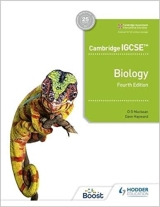Chlamydomonas, an Introduction
Chlamydomonas is the name given to a genus of microscopic, unicellular green plants (algae) which live in fresh water. Typically their single-cell body is approximately spherical, about 0.02 mm across, with a cell wall surrounding the cytoplasm and a central nucleus.
Two filaments of cytoplasm, flagella, (sing. flagellum), extend from one end, and their whip-like lashings pull the chlamydomonas through the water and rotate it at the same time. A single, cup-shaped chloroplast occupies the greater part of the cell. In this chloroplast is a protein region called a pyrenoid, which is involved in starch production and is often surrounded by starch granules.
A region of cytoplasm near the origin of the flagella is sensitive to light, and associated with this is a red pigment spot whose shadow when cast on the sensitive area is thought to cause turning movements of the chlamydomonas and so bring it into the region where the intensity of the light is most suitable for it.
In this anterior region are seen two spherical vacuoles which swell and collapse alternately. These contractile vacuoles are concerned with the expulsion of excess water absorbed by osmosis.
Nutrition. Chlamydomonas makes its food in the same way as green plants, but without the elaborate system of roots, stem and leaves of the higher plants. It is surrounded by water containing dissolved carbon dioxide and salts so that in the light, with the aid of its chloroplast, it can build up starch by photosynthesis. From this carbohydrate, with additional elements, it can synthesize all the other materials necessary for its existence.
Gaseous exchange. No special breathing organs are present; the oxygen needed for respiration diffuses in from the water through the entire surface of the cell. Similarly, carbon dioxide diffuses in during photosynthesis.
Reproduction. In favourable conditions the chlamydomonas individuals will continue to grow and then, at a certain size, reproduce by cell division. The flagella are withdrawn, the cytoplasm shrinks slightly within the cell wall, the nucleus and then the cytoplasm divide once, twice, or occasionally three times, to give two, four or eight separate units of cytoplasm each with a nucleus and chloroplast. Each of these units forms a new cell wall and a pair of flagella. The parent cell wall bursts open and releases the daughter individuals.
This fission may occur once a day, so that great numbers of Chlamydomonas may appear very rapidly, when they usually make the water look green.
Sexual reproduction, of a kind, occurs. Division as described above takes place but produces up to sixteen new individuals which do not develop cell walls. On release from the parental cell they swim about and may meet other individuals and fuse in pairs to form a zygote.
The zygote eventually rounds off, withdraws the flagella, secretes a thick wall round the cytotoplasm so forming a zygospore which sinks to the bottom of the pond. In this form it may be resistant to extremes of temperature and survive even the drying up of the pond. As a zygospore, too, it may be distributed in dust or mud, and so reach new situations. The cytoplasm in the zygospore will divide, usually into four units, which are released as new chlamydomonas individuals.
| Search this site |
| Search the web |
© Copyright D G Mackean & Ian Mackean. All rights reserved.


